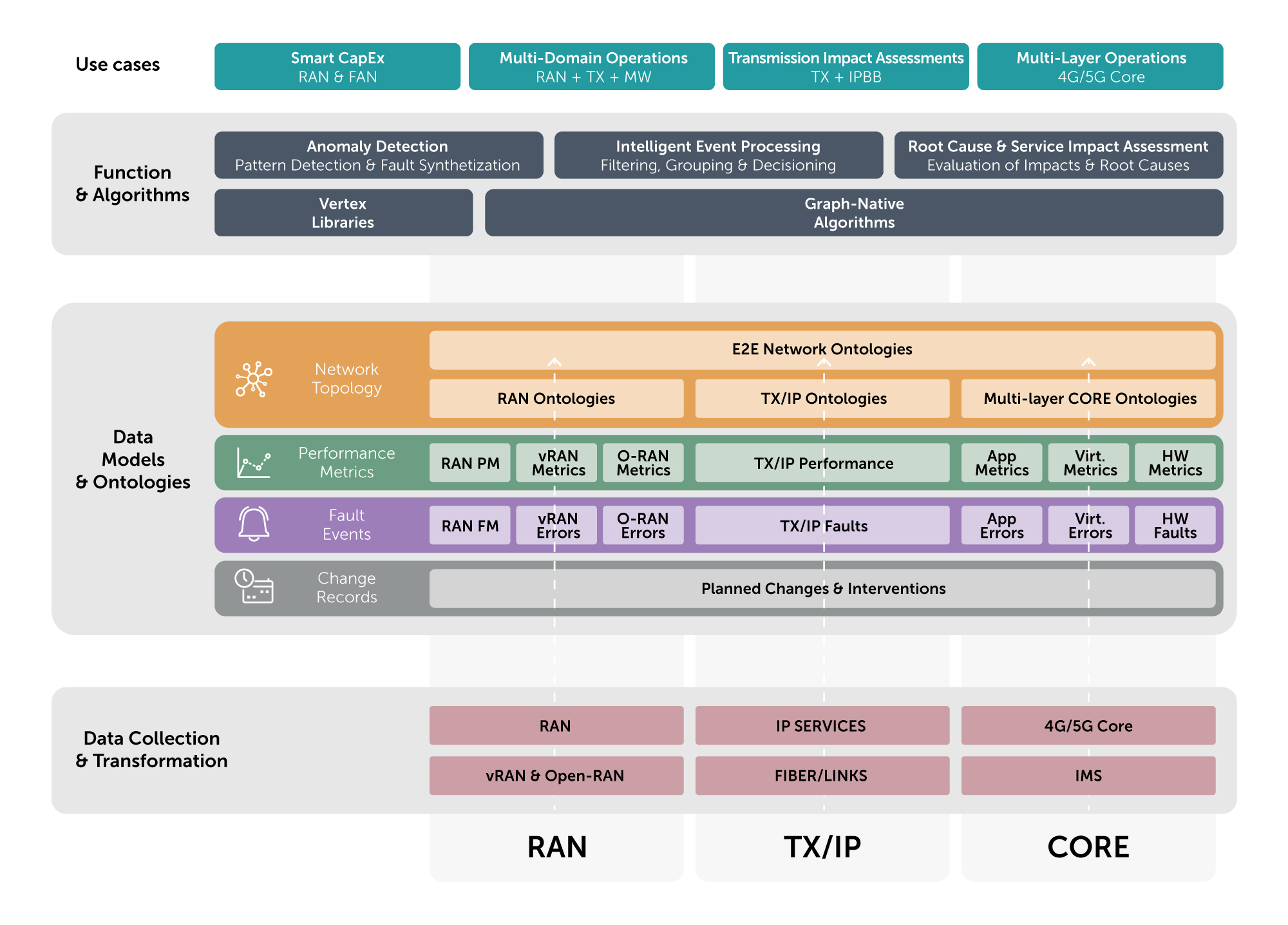

The telecommunications industry is undergoing a profound transformation, with the move toward AI-native networks driving the need for greater efficiency, agility, and resilience. However, most Communication Service Providers (CSPs) remain constrained by siloed domains, fragmented data, and reactive operations that limit their ability to evolve.
Network domains typically function in isolation, managed by dedicated teams relying on domain-specific tools. While this enables specialised attention, it creates blind spots and fragmented visibility when incidents occur. A single fault within one domain can easily cascade into adjacent areas, generating multiple alarms and misleading noise.
Consequently, Network Operation Centres (NOCs) often perceive a single underlying issue as several unrelated incidents, assigning them separately to multiple teams. This fragmented approach results in duplicated efforts, prolonged troubleshooting, and delayed identification of the true root cause.

A Network Digital Twin serves as a powerful enabler for next-generation operations by providing a dynamic, real-time replica of the network's physical and logical structure across multiple domains.
This digital representation unlocks several key capabilities that enhance both operational efficiency and strategic planning. From visualising and analysing multi-domain topologies to pinpointing root causes of faults and predicting service impacts, the digital twin transforms how CSPs manage complexity.
It not only supports faster incident resolution and improved reliability but also enables proactive decision-making through scenario analysis and network optimisation, ultimately driving better customer experiences and more efficient use of resources.
Model physical & logical topology of multiple interconnected network domains.
Benefits: multi-domain root cause analysis, and full E2E visibility of domain interactions.
Identify dependencies and fault propagation paths within the network.
Benefits: Faster incident resolution, reduced downtime, and improved service reliability.
Assess how changes – maintenance, upgrades, etc. – impact connected nodes.
Benefits: minimise service disruption, improve planning, manage customer expectations.
Optimise data flow, reroute traffic dynamically, and resilience.
Benefits: Reduces congestion, improves latency, and ensures efficient resource utilisation.
Celfocus’s Network Digital Twin framework is built on a modular foundation that integrates key capabilities across multiple levels, ensuring scalability, adaptability, and real-world applicability. At its core, the framework combines advanced functions and algorithms for analytics and automation, robust data models and ontologies to standardise and represent complex network relationships, and flexible data collection and transformation pipelines that ingest and harmonise information from diverse sources.
This layered architecture enables CSPs to accelerate their digital twin adoption, ensuring accurate, real-time insights and supporting a wide range of use cases – from operational intelligence to strategic planning.

The implementation of a Network Digital Twin delivers tangible outcomes across several critical operational domains, helping CSPs transition from reactive, fragmented processes to intelligent, data-driven operations.





